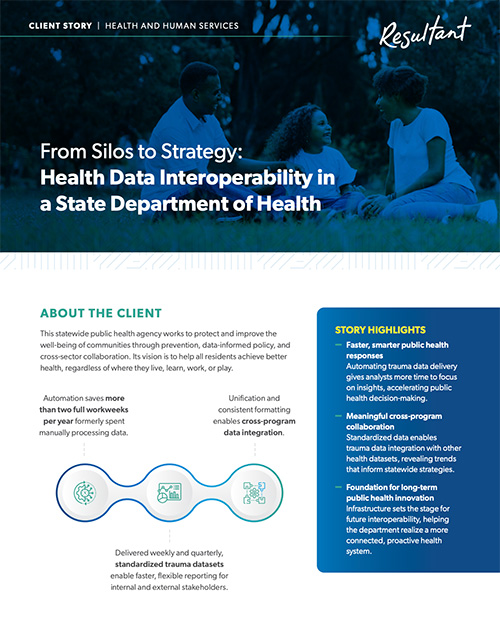From Silos to Strategy: Health Data Interoperability in a State Department of Health
Share
Story highlights
From manual strain to modern solutions
The state needed a solution that would give them ownership of their data and free their team to focus on what matters most: identifying trends, developing solutions, and taking action to improve public health outcomes.

Automating insight, empowering analysts
Key technologies




